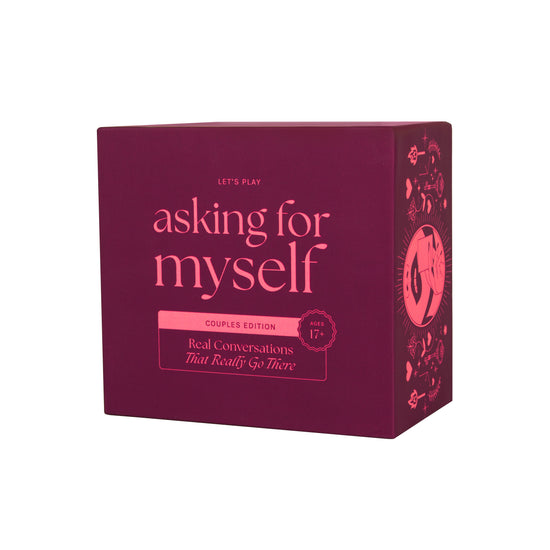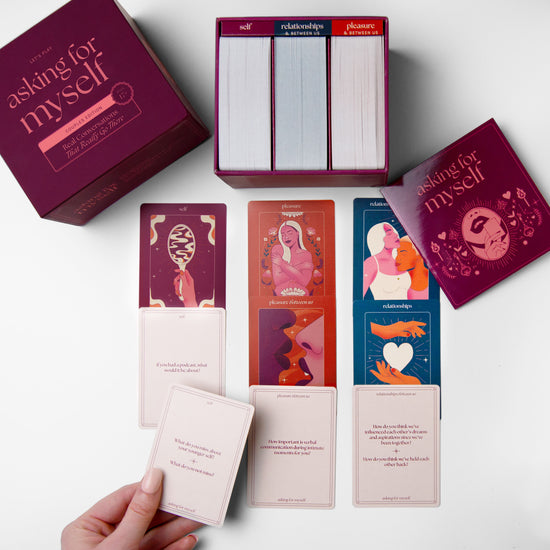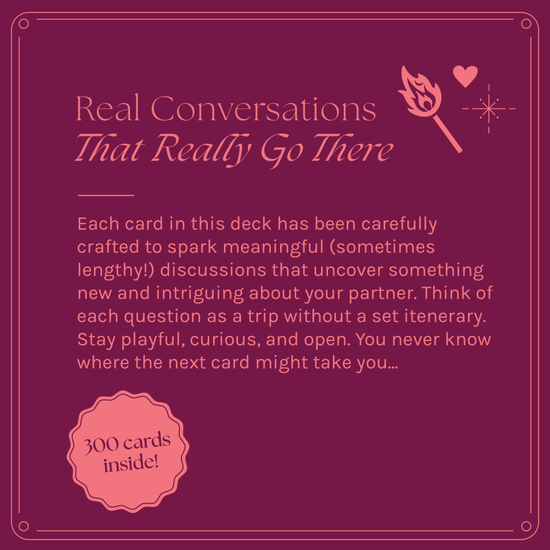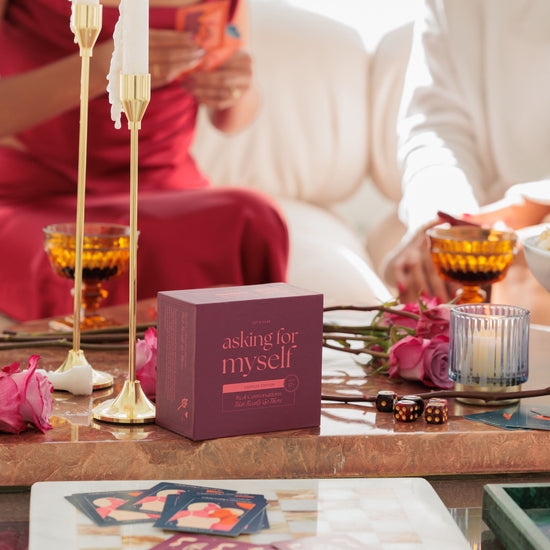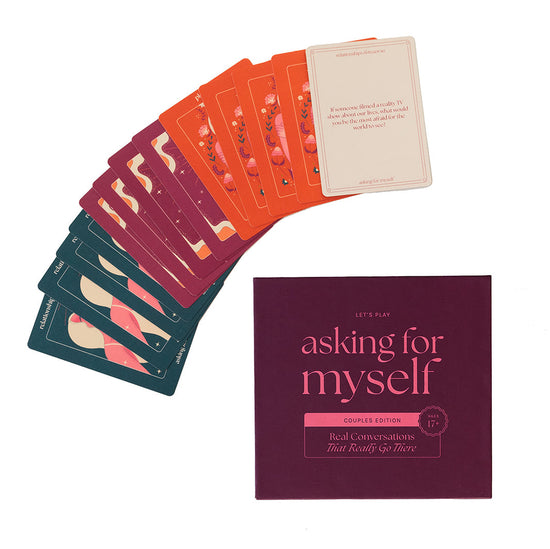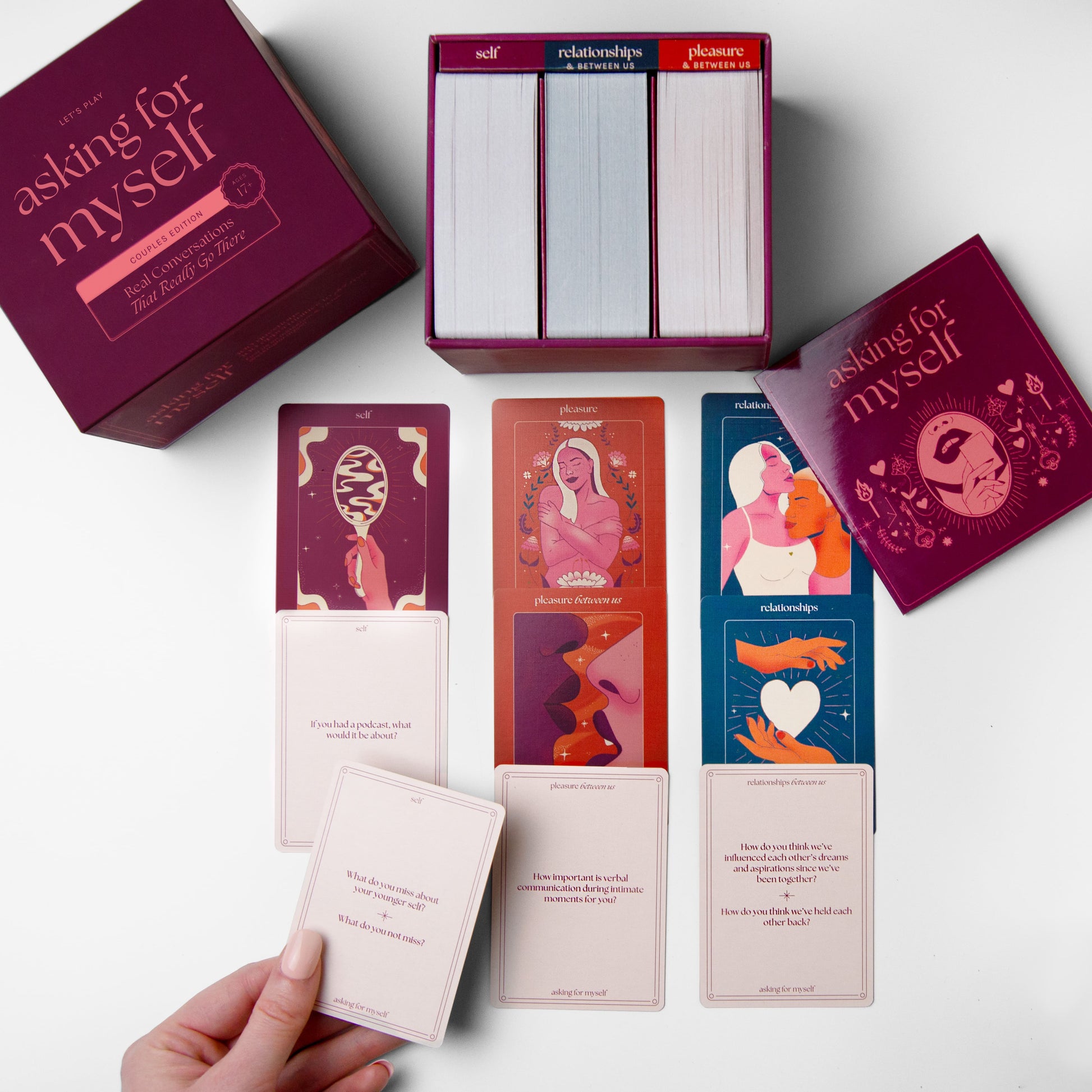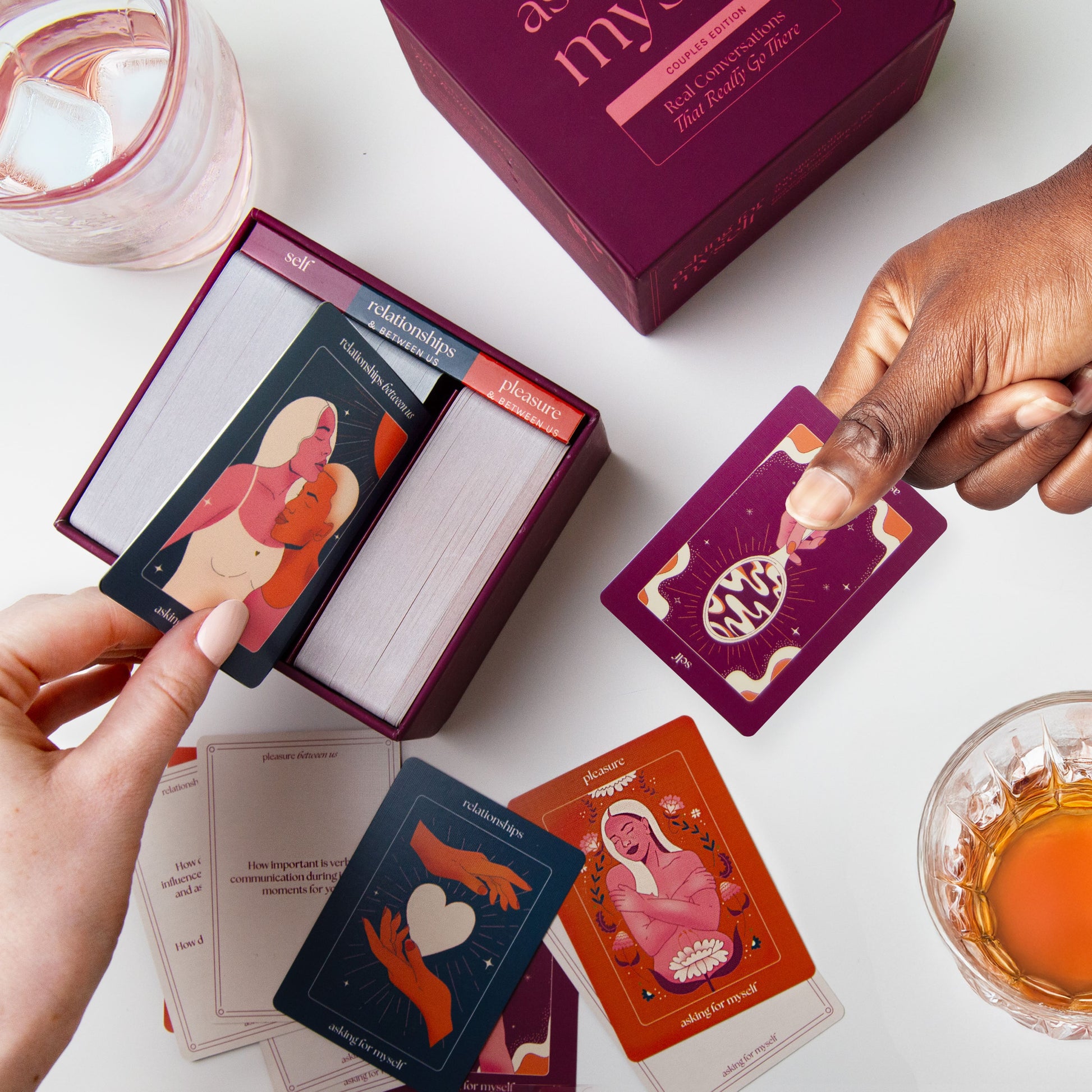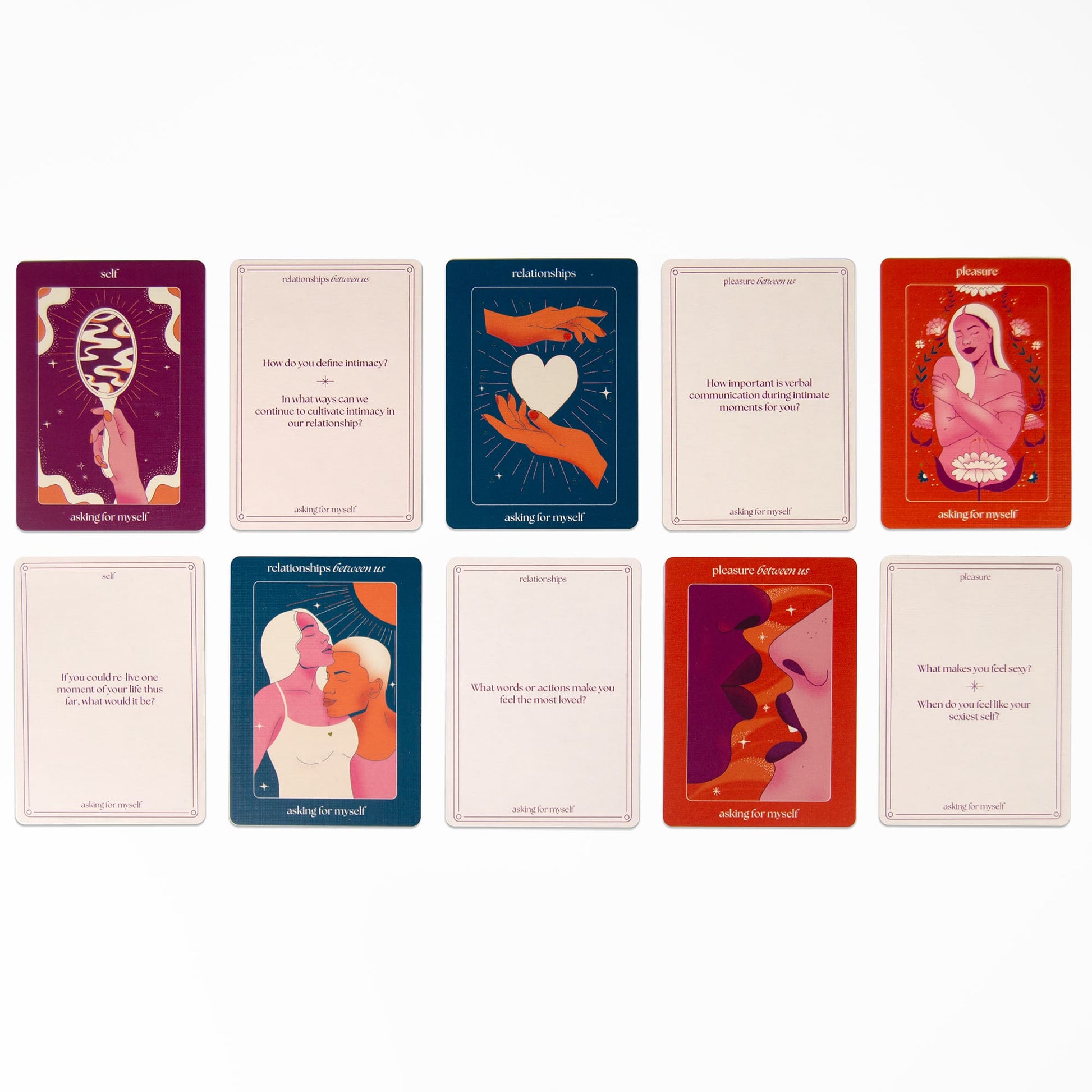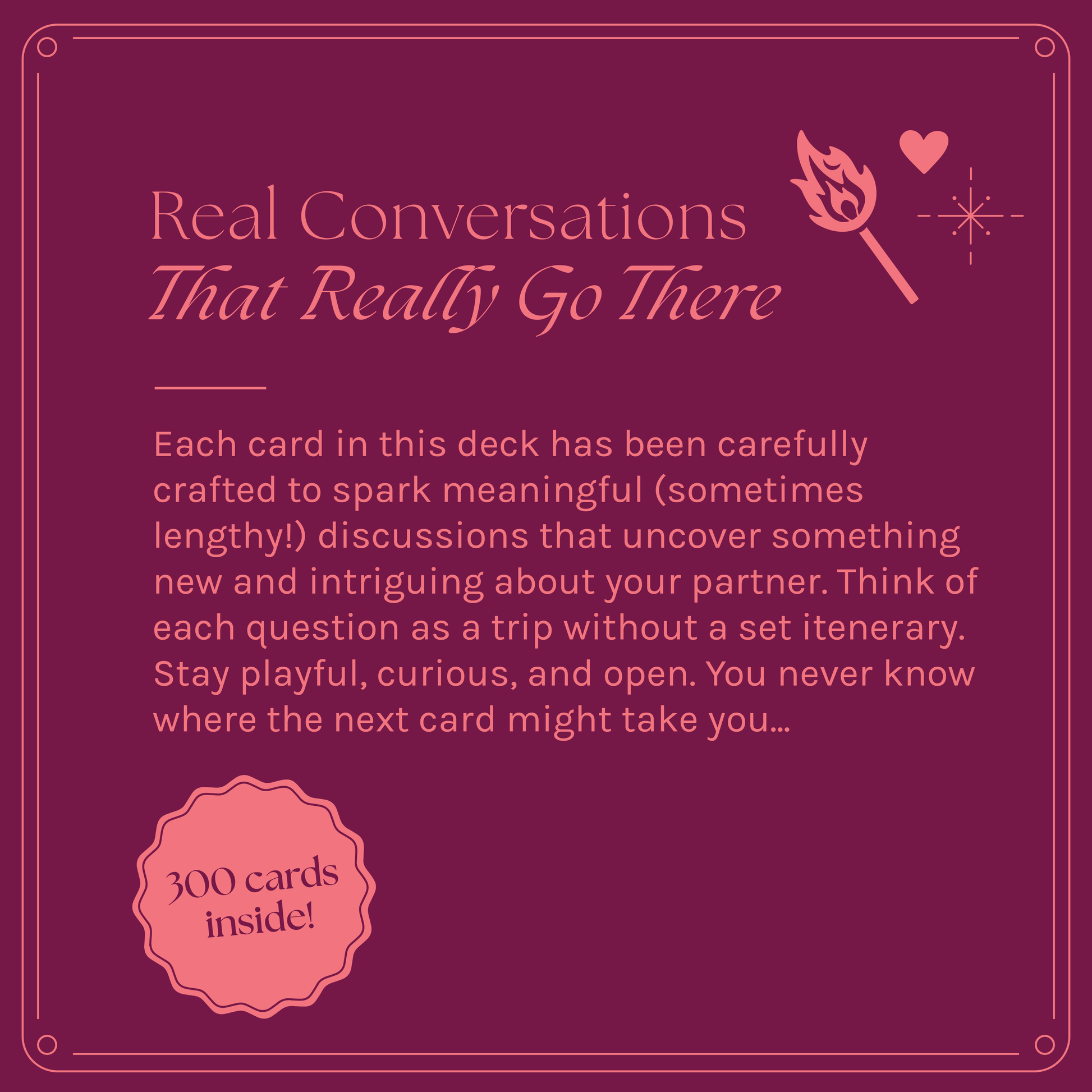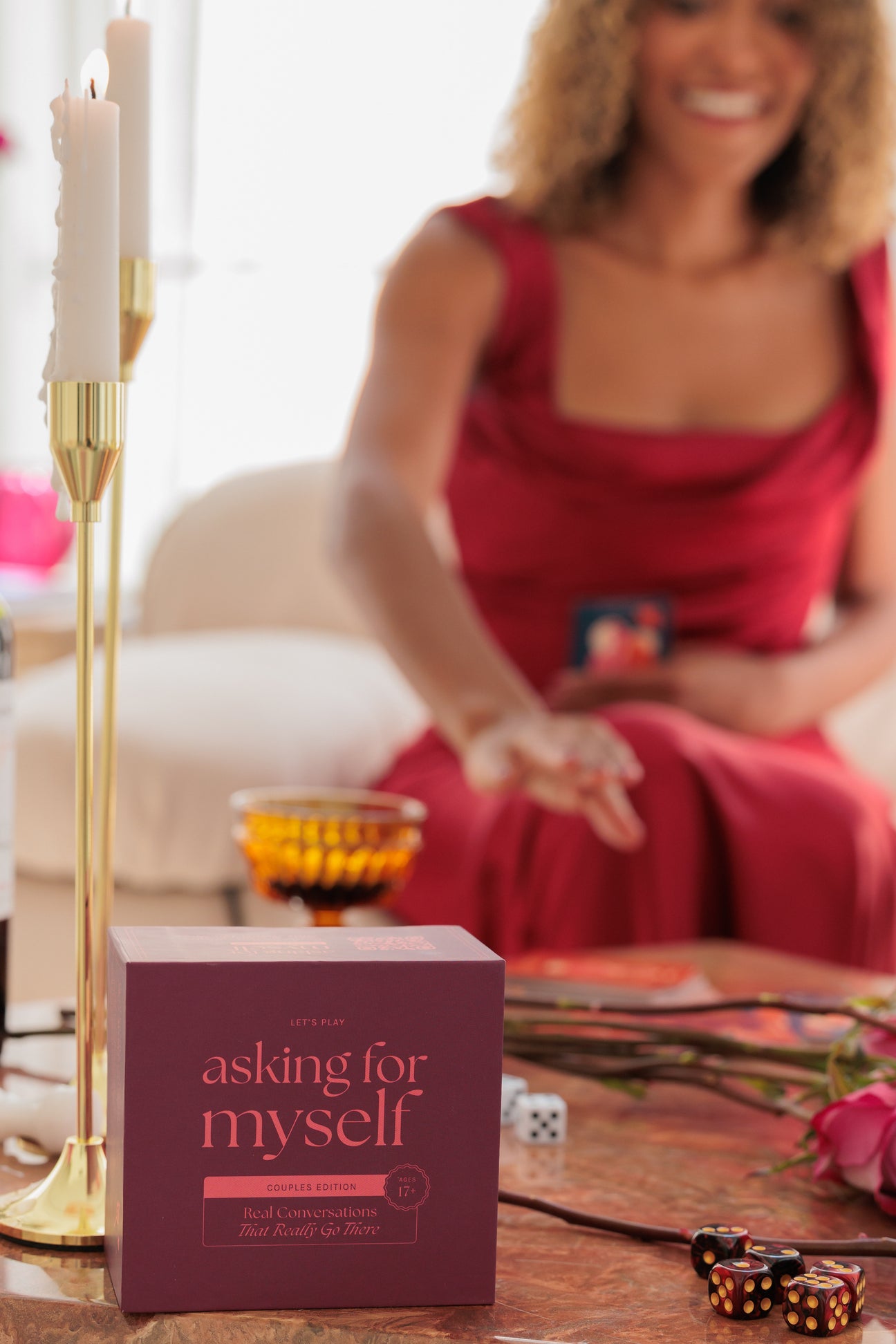First, wow. Thank you for buying my game! If you haven't bought it yet, thank you for learning more. And if it was a gift...

Game Play
Asking for Myself is a tool for couples to engage in meaningful conversations that transcend the mundane. By taking turns asking and answering thought-provoking questions, you create a space for mutual understanding and shared growth. Whether on a road trip or in the comfort of your home, this game encourages ongoing dialogue and fosters a deeper connection between partners.
Is there a specific way to play?
Standard Game Play
Sit together, whether it's during a road trip or before bedtime, and take turns drawing cards from the three categories. Each person asks the corresponding question to their partner. After the answer, switch roles, creating a continuous and reciprocal flow of conversation.
The "Between Us" Cards
The Between Us cards in the Relationships and Pleasure categories are designed to dig into your unique dynamics as a couple. The pleasure questions get a little spicy 🥵, so I recommend a cozy environment suited for play...
No Pressure! (The Pleasure Cards)
While the Pleasure cards may take you to…places 😏, there should never be any pressure for something to happen. If it does, amazing! If not, conversations about sex actually lead to better sex, so it’s a total win to have an eye-opening and candid conversation with your partner fully clothed, without any expectations.
Don’t forget: pleasure isn’t all about sex. These cards will help you and your partner get to know and understand each other in a new way that deepens intimacy and connection. What could be sexier than that?!
Variations & Flexibility
Random Acts of Connection
Incorporate the questions into daily life for spontaneous, unplanned moments of connection.
Time Capsule
Record your answers (think voice memos or in a notebook) and open them at a later date to reflect on how your relationship has evolved.
Themed Sessions
Focus on a single category for a session, allowing for a deeper dive into specific aspects of each other's thoughts, beliefs, and experiences.
What if the conversations get heated or bring up difficult, unresolved feelings?
Take a breath and reflect.
If things get intense, pause and connect. Express gratitude for vulnerability and validate each other’s feelings, even if you disagree or feel upset by them. You care enough about each other to engage in uncomfortable conversations and that is something to be so proud of.
Remember the why.
The goal is connection, not conflict. The cards are designed to foster understanding, so use them as a tool for growth and connection rather than a source of tension. You want to get to know how your partner thinks and feels, and that requires curiosity, compassion, and an open mind.
Really listen to what your partner is saying.
Be present, reflect back what you hear, and avoid interrupting. Acknowledge each other's feelings without judgment. Truly listen to understand, not just respond.
Focus on "I" statements. Share your feelings without blaming or attacking.
Practice those feeling words! "I feel hurt, disappointed, sad, insecure, rejected, scared…” Coming from a place of feeling is more constructive than accusatory language like "You always..." Keep the conversation open and respectful, even when you feel at odds with each other.
Seek common ground.
Even in disagreements, look for the shared desire for connection. Difficult feelings are opportunities to grow closer, not reasons to pull away.
Show physical affection if that feels safe for you.
A comforting hug, holding hands, or a gentle touch can de-escalate tension and remind you of your bond.
Lighten things up a bit.
After you hug it out, share a funny memory or decompress by watching a favorite movie or a tv show that makes you laugh. Go on a walk alone to get some space or together to unwind. Ask yourself if it's really that deep. If it is, revisit. If it's not, take it as a learning and let it go.
Call a "time out" if needed.
It's okay to step back and regroup. Agree to revisit the topic later when you feel more settled and ready to discuss. Remember, empathy is key, but honor your feelings if emotions are running too high to have a meaningful conversation.
Seek outside support (we love therapy!).
If things feel overwhelming or you’re really stuck on a topic, it's okay (and encouraged) to get guidance from someone trained to help you communicate. If you need help finding a therapist, just let us know!
Remember...
If things get intense, take a breather, remind yourselves of the love you share, and come back when you're both ready. Use the opportunity to grow stronger together by practicing patience, empathy, and understanding. You got this! Healthy communication is a muscle. Keep exercising it and have fun in the process!
Asking for Myself: Couples Edition Card Deck
- Regular price
- $30.00
- Sale price
- $30.00
- Regular price






